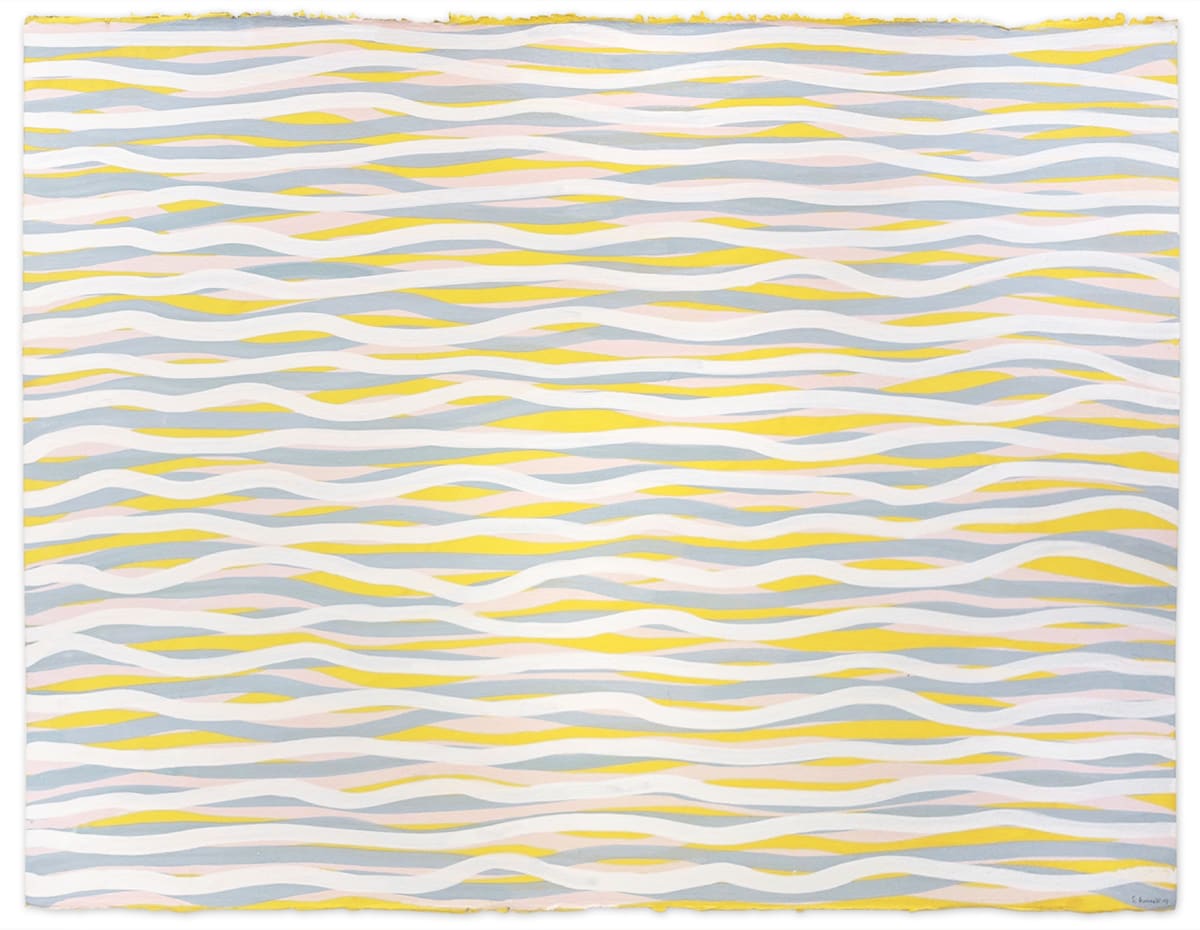
Sol LeWitt is considered one of the most important artists to have emerged from the Minimal and Conceptual art movements.
Sol LeWitt is considered one of the most important artists to have emerged from the Minimal and Conceptual art movements. Since 1960, LeWitt has worked in a variety of media including sculpture, drawing (both on paper and walls), prints, and photography.
Born in Hartford, Connecticut in 1928, as a child LeWitt enjoyed making art and took classes at the Wadsworth Atheneum to develop this interest. He studied art more formally at Syracuse University, from where he would graduate in 1949. In the summer of 1950, LeWitt traveled throughout Europe to study firsthand the art of the old masters. Afterwards, he was drafted for the Korean War, where one of his duties included producing posters. Following his service, LeWitt moved to New York City to study at the Cartoonists and Illustrators School (now the School of Visual Arts). After working in the design department at Seventeen magazine, LeWitt worked for the architect I. M. Pei as an architectural draftsman, a job that would profoundly influence his ideas about art. Working with architects not only affected LeWitt’s ideas concerning geometric precision and the viewer’s relationship to the work, it also taught him that as an artist he could work with others, as architects do, to realize his vision.
Sol LeWitt is considered one of the most important artists to have emerged from the Minimal and Conceptual art movements. Since 1960, LeWitt has worked in a variety of media including sculpture, drawing (both on paper and walls), prints, and photography.
Born in Hartford, Connecticut in 1928, as a child LeWitt enjoyed making art and took classes at the Wadsworth Atheneum to develop this interest. He studied art more formally at Syracuse University, from where he would graduate in 1949. In the summer of 1950, LeWitt traveled throughout Europe to study firsthand the art of the old masters. Afterwards, he was drafted for the Korean War, where one of his duties included producing posters. Following his service, LeWitt moved to New York City to study at the Cartoonists and Illustrators School (now the School of Visual Arts). After working in the design department at Seventeen magazine, LeWitt worked for the architect I. M. Pei as an architectural draftsman, a job that would profoundly influence his ideas about art. Working with architects not only affected LeWitt’s ideas concerning geometric precision and the viewer’s relationship to the work, it also taught him that as an artist he could work with others, as architects do, to realize his vision.
LeWitt was originally associated with the Minimalist art movement due to his extensive use of reductive, geometric forms, namely the identical cubes, employed since 1965 in serial configurations, that would become a signature form. LeWitt later became so closely associated with the Conceptual art movement that he is often called “the father of Conceptual art.” In 1967, LeWitt wrote “Paragraphs on Conceptual Art” in which he argued that the idea, or concept, that informs the work is more important than the final physical form that the artist employs to transmit his ideas. As LeWitt wrote, “I will refer to the kind of art in which I am involved as conceptual art. In conceptual art the idea of concept is the most important aspect of the work.”(1) It is because of this pivotal work and his “Sentences on Conceptual Art” of 1969 that LeWitt is often credited with being the first to use the term “Conceptual” to describe the practices of several artists, himself included, in the late 1960s.
In 1978, The Museum of Modern Art in New York held an important retrospective of fifteen years of LeWitt’s work. This led to a critical reevaluation of LeWitt’s work by many who were aware of the rigorous intellectual basis of the work, yet were nonetheless struck by its powerful beauty. LeWitt himself seems to have been affected by the retrospective as his work made after it changes, both in form and aesthetic, to incorporate new concerns and influences. While the square was central to LeWitt’s early work, beginning in 1980 LeWitt expanded his geometric vocabulary to include the circle and the triangle. Using isometric projection, the forms took on the illusion of three-dimensionality, a reference perhaps to LeWitt’s celebrated open cubic form sculptures. The subtle palette of burnished tones and the illusion of spatial depth in LeWitt’s later works recalls both ancient Roman and Italian Renaissance frescoes, which LeWitt, who established a study in Spoleto, Italy in 1980, would have had opportunity to study firsthand.
LeWitt continues to be an important and influential artist. In 2000, the San Francisco Museum of Modern Art staged a retrospective of his work that traveled to the Museum of Contemporary Art, Chicago, and the Whitney Museum of American Art.
1. Sol LeWitt “Paragraphs on Conceptual Art.” Originally published in Artforum, 5:10 (Summer 1997), pp. 79-84. Cited in Conceptual Art: A Critical Anthology edited by Alexander Alberro and Blake Stimson (Cambridge, MA: MIT Press, 1999), p. 12.












